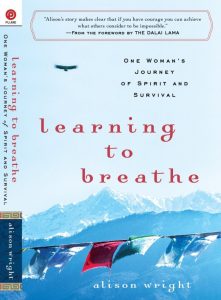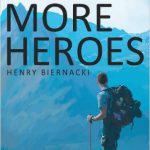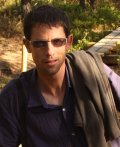Long time Photojournalist Alison Wright has traveled to the far corners of the planet photographing endangered cultures and people. Her work has been dangerous at times – including covering demonstrations that became violent in Nepal. And she has certainly been involved in a number of mishaps in her career.
But this story is not about those adventures.
It is about a horrific crash involving a bus she was in and a logging truck on a windy dirt road in Laos. And the incredible story of how she survived this crash against all odds and her long road to recovery. A number of times in the months after the accident people would remark to her “you should be dead”. And by all medical logic, she should have been.
She sustained injuries that would have in fact killed most people – her intestines and organs were shoved up into her right shoulder, with major internal injuries, a plethora of broken bones, severe lacerations requiring hundreds of stitches – and all this endured for 14 hours before she was even able to see the inside of a real hospital.
On the fly help from those who had no medical training and her ability to pull physical and emotional strength from years of meditating incredibly helped her stay alive through the worst of this experience.
After years of wandering the globe gaining a broad perspective on cultures, people, religions and way of life this accident reduced her perspective to a hospital bed. And the recovery and surgeries and physical therapy that followed for months and years would be enough to shatter one’s emotions and outlook on life.
But Allison wasn’t one to wallow in self pity – she surrounded her self by upbeat and positive professionals in her immediate world of health care – and slowly persevered – finally walking again. Then she set a rather ambitious goal – to reach the 5,895 meter summit of Mt Kilimanjaro in Africa – only about 2 years after her accident.
While seemingly an impossible task given her injuries and recovery at the time – she ultimately summited Africa’s tallest mountain.
Returning to the career she had before the accident was slow – but ultimately she was able to do so. One of her visits was to the crash site three years later. She met a number of those who were immediately with her following the accident including the gentleman who crudely stitched up her arm and the doctor who was the first to treat her.
This book is a gripping read of real life survival, the strength of the human spirit, recovery and reflection.








Leave a Reply